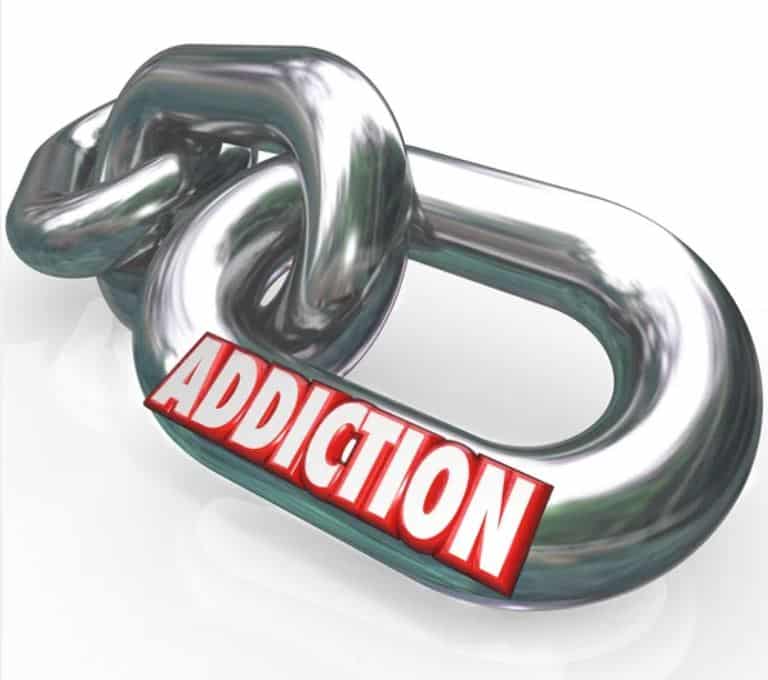When you hear the word “chain” used in reference to chain of addiction, what’s the first thing that comes to your mind?
For many people, this word likely conjures an image of being trapped by the chains of addiction. If this is what you thought of, you’re not wrong.
Untreated addiction can be painful. It can be restrictive and isolating. And it can definitely limit your ability to change, grow, and prosper. Viewed from this perspective, “the chains of addiction” is definitely an apt metaphor.
But the word “chain” also has another important meaning that relates to substance abuse and addiction.
What Is the Chain of Addiction?
The term “chain of addiction” can describe the behaviors and experiences that take a person from their first interaction with a substance to the point where they have become dependent on it.
In this context, what is the chain of addiction? You can think of it as an escalating series of harmful developments. The chain of addiction can begin with substance use and continue through substance abuse, tolerance, and withdrawal.
Substance Use
Substance use is an extremely broad term that can be applied to a wide range of behaviors, including both legal and illegal actions. Taking a prescription painkiller, drinking a beer, and snorting cocaine are all examples of behaviors that can be correctly described as substance use.
As part of the chain of addiction, substance use refers to a person’s initial interactions with an addictive substance.
For many people, this is where the chain of addiction thankfully stops. They use prescription painkillers as directed by their doctor, and they stop when they are supposed to. They enjoy an occasional alcoholic drink in moderation, but this never becomes a problematic behavior. And they make the risky decision to try cocaine once, and they never do it again.
For others, though, the chain of addiction leads them to a second, more dangerous step: Substance abuse.
Substance Abuse
Substance abuse typically describes the misuse of substances in a manner that causes physical or psychological harm.
To continue our examples from the previous section, using prescription painkillers not because you have a legitimate medical condition, but because you like how they make you feel, is an example of substance abuse.
Other examples of substance abuse can include binge drinking, drinking past the point of impairment, and repeated use of cocaine or other illegal substances.
Any substance use can cause negative effects. But when substance use becomes substance abuse, the likelihood of significant harm increases considerably. Substance abuse can also put a person on the doorstep of addiction.
Addiction
The Diagnostic and Statistical Manual of Mental Disorders (DSM-5) characterizes addiction as “a cluster of cognitive, behavioral, and physiological symptoms.” This refers to the negative impact that addiction can have on how a person thinks, feels, and acts.
In addition to a loss of control, addiction is also marked by two other disturbing developments: tolerance and withdrawal.
Tolerance
When a person continues to abuse alcohol or another drug, over time they will need to ingest the substance more frequently or in larger amounts in order to achieve the effect they’re seeking. This is known as tolerance.
The amount of time it takes someone to develop tolerance can vary from person to person and drug to drug. But it will eventually occur. And anything that causes a person to increase their substance abuse also increases their risk for long-term harm.
Withdrawal
Sustained substance abuse can cause a person’s body to adapt to the presence of the drug they’ve been abusing. When the person can’t acquire or use the substance, or if they try to stop using it, their body may react with a series of unpleasant symptoms. This is known as withdrawal.
This is often the point when the chain of addiction transforms into the chains of addiction. In other words, this is when many people finally realize that they’re trapped.
Depending on the nature and severity of a person’s addiction, the pain of withdrawal can quickly overwhelm even the most fervent desire to stop using substances. At this point, a person may feel that their only option is to continue abusing the drug they’ve become addicted to.
Thankfully, another option does exist. The chain of addiction can be broken.
Breaking the Chain of Addiction
When a person gets effective professional treatment for addiction, they can stop abusing substances and start living a healthier and more satisfying life.
Contrary to an unfortunately persistent myth, people don’t need to wait until they’ve hit “rock bottom” before they get help. They can begin to break the chain of addiction at any time.
Addiction treatment can take many forms, including partial hospitalization programs, intensive outpatient programs, and outpatient rehab. What’s most important is finding the type and level of care that is best suited to the individual.
For many people, effective addiction treatment starts with detoxification, or detox. Detox programs are safe places where people can complete withdrawal under the supervision of experienced professionals. Depending on the person’s needs, detox services may include both medical and therapeutic support.
Once a person has successfully completed detox, they can begin to develop the skills that will help them remain in recovery.
Begin Addiction Treatment in Birmingham, Alabama
If you or someone that you care about has been struggling with addiction, please know this: Help is available and treatment works. Birmingham Treatment Center can empower you to break the chain of addiction and build a foundation for successful recovery. When you’re ready to regain control of your life, our team is here for you. Contact us today to learn how we can help.
